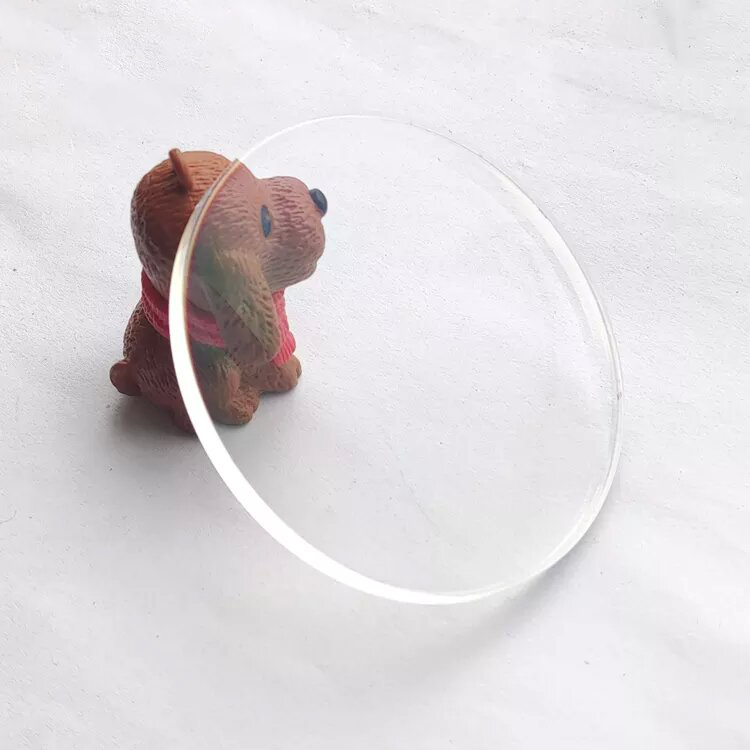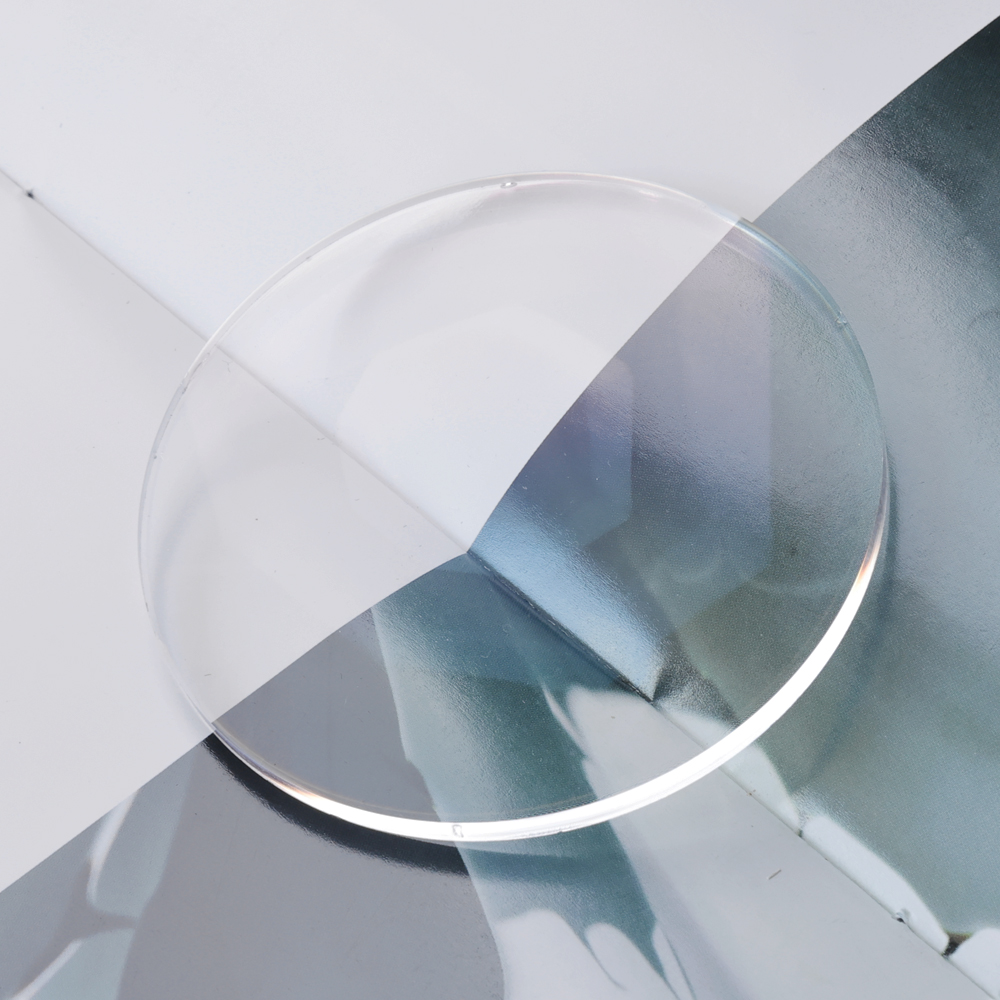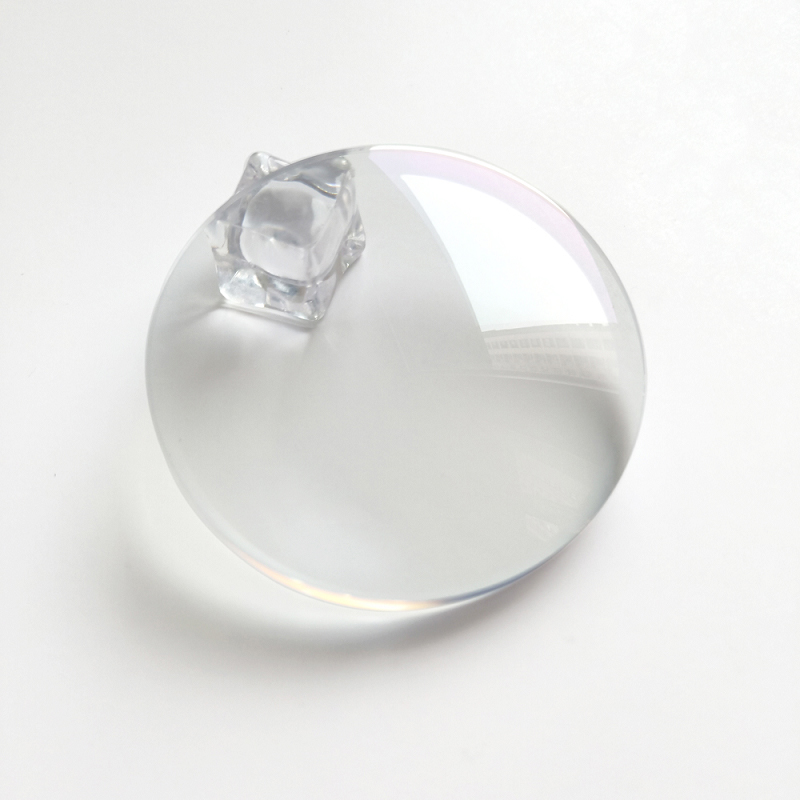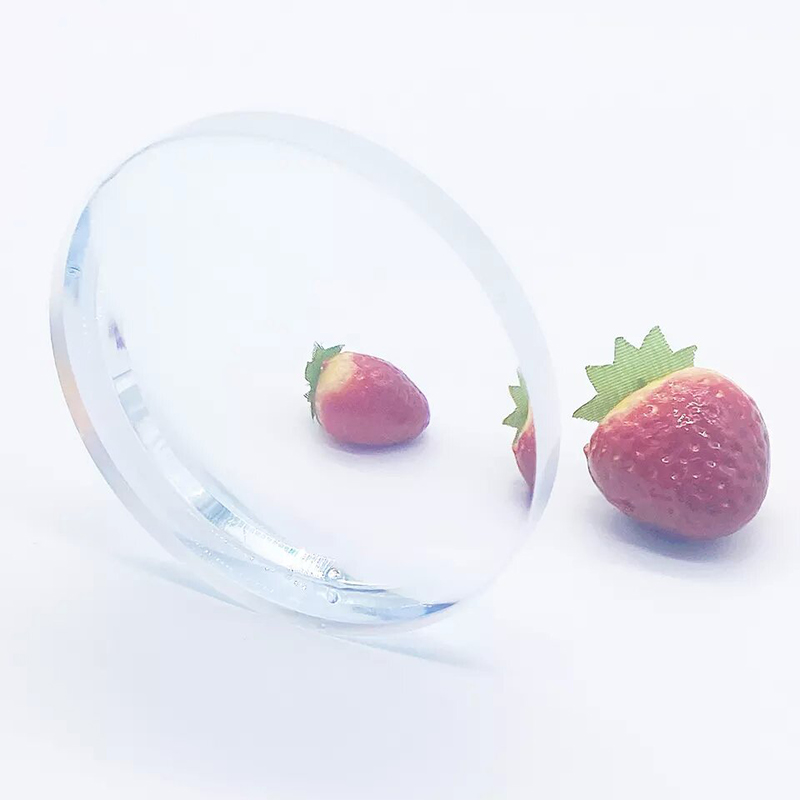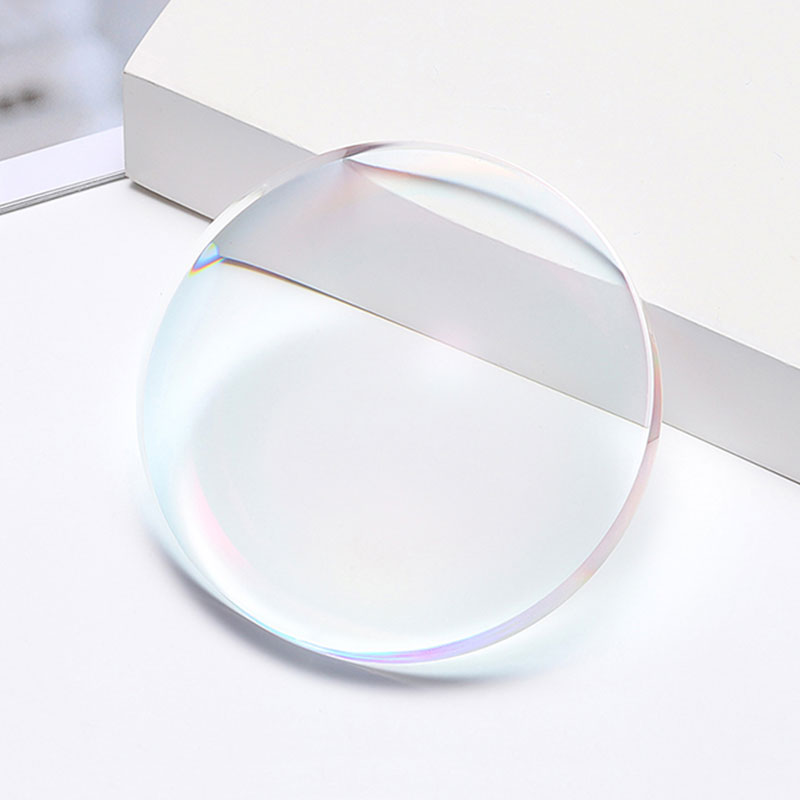Introduction to Single Vision Lenses
What are Single Vision Lenses?
Single vision lenses are a type of prescription lenses designed to correct one type of vision problem in a single lens. These lenses are intended to provide a uniform prescription across the entire surface of the lens, making them suitable for individuals who require correction for nearsightedness (myopia), farsightedness (hyperopia), or simple astigmatism. Unlike multifocal lenses, single vision lenses do not have multiple zones for different vision distances. They are commonly used in prescription glasses for everyday activities, including reading, driving, and computer work. The main function of single vision lenses is to ensure that light entering the eye is properly focused on the retina, which improves visual clarity for specific tasks or overall distance vision depending on the prescription.
Brief History and Evolution of Single Vision Lenses
The development of single vision lenses has a long history that dates back several centuries. The earliest corrective lenses were simple convex or concave lenses used to correct farsightedness or nearsightedness. Over time, the understanding of optics and eye anatomy allowed for more precise prescriptions. By the 18th and 19th centuries, opticians were able to produce lenses with specific corrective powers for individual visual impairments. In the 20th century, advances in lens materials and coatings enhanced the durability, clarity, and comfort of single vision lenses. The introduction of lightweight materials such as polycarbonate and high-index plastics made lenses thinner and more convenient for daily wear. Modern innovations also include coatings that reduce reflections, block harmful UV rays, and filter blue light from digital screens, enhancing the overall vision correction experience.
Why Choose Single Vision Lenses?
Single vision lenses are often selected for their simplicity and effectiveness in addressing a single vision need. They provide consistent optical correction across the lens surface, making them suitable for both distance vision and near vision depending on the prescription. Individuals with myopia, hyperopia, or mild astigmatism benefit from single vision lenses as they help maintain clear and focused vision for daily activities. Another reason for choosing single vision lenses is their versatility in lens material options, including polycarbonate lenses, high-index lenses, and standard plastic lenses, which can be combined with advanced coatings such as anti-reflective, scratch-resistant, and UV protection. These features make single vision lenses a practical choice for people seeking reliable vision correction without the complexity of multifocal or progressive lenses.
Common Eye Conditions Corrected by Single Vision Lenses
Single vision lenses are primarily used to correct myopia, hyperopia, and astigmatism. Myopia, or nearsightedness, occurs when the eye focuses light in front of the retina, making distant objects appear blurry. Single vision lenses for myopia help diverge light rays so that they focus properly on the retina. Hyperopia, or farsightedness, happens when light is focused behind the retina, causing close objects to appear blurry. Convex single vision lenses are used to converge light rays, improving near vision. Astigmatism, caused by irregular curvature of the cornea or lens, results in distorted or blurred vision at all distances. Toric single vision lenses are sometimes prescribed to address simple astigmatism. Proper diagnosis through an eye exam is essential to determine the exact prescription needed for effective vision correction.
Lens Materials for Single Vision Lenses
Single vision lenses are available in a range of materials that affect weight, thickness, durability, and optical clarity. Standard plastic lenses are lightweight and cost-effective, suitable for mild prescriptions. Polycarbonate lenses offer increased impact resistance and are thinner than standard plastic, making them a popular choice for children and active individuals. High-index lenses are designed for stronger prescriptions, reducing lens thickness while maintaining optical accuracy. Each material has its advantages depending on prescription strength, lifestyle, and desired comfort. When selecting lens material, considerations such as frame type, durability requirements, and visual needs play an important role in ensuring that the lenses meet both functional and aesthetic preferences.
Lens Coatings and Additional Features
Modern single vision lenses often include coatings that enhance performance and eye comfort. Anti-reflective coatings reduce glare from screens, headlights, and overhead lighting, improving visual clarity and reducing eye strain. Scratch-resistant coatings help maintain lens surface integrity over time, extending the lifespan of the lenses. UV protection coatings shield eyes from harmful ultraviolet rays, which can contribute to cataracts and other eye conditions. Blue light blocking coatings filter specific wavelengths emitted by digital devices, potentially reducing eye fatigue for individuals who spend extended periods in front of screens. These coatings can be combined to meet specific visual needs and lifestyle requirements, making single vision lenses more adaptable and functional for everyday use.
Prescription and Eye Examination
Obtaining single vision lenses requires a professional eye exam to determine the correct prescription. The eye exam assesses visual acuity, refractive errors, and other ocular conditions that may affect vision. An optometrist or ophthalmologist provides a prescription indicating the lens power needed to correct myopia, hyperopia, or astigmatism. Accurate measurement of the pupillary distance ensures proper lens alignment in the frame, which is essential for optimal vision correction. Regular eye exams are recommended to monitor changes in vision and adjust prescriptions accordingly, maintaining effective vision correction over time.
Comparison of Single Vision Lens Materials
| Lens Material | Weight | Durability | Thickness for High Prescription | Recommended Use |
|---|---|---|---|---|
| Standard Plastic | Light | Moderate | Thicker for strong prescriptions | Mild prescriptions, cost-effective |
| Polycarbonate | Light | High (impact-resistant) | Moderate | Children, active lifestyle, sports |
| High-Index Plastic | Lightest | Moderate | Thinner for strong prescriptions | Strong prescriptions, aesthetic preference |
Factors to Consider When Choosing Single Vision Lenses
When selecting single vision lenses, several factors should be considered to ensure proper vision correction and comfort. The type of visual impairment, such as myopia, hyperopia, or astigmatism, determines the appropriate lens shape and power. Lens material choice affects weight, thickness, and impact resistance. Coatings like anti-reflective, UV protection, and blue light filtering provide added benefits for eye health and comfort. Frame style may also influence lens selection, as certain materials work better with specific frame designs. Finally, lifestyle considerations, such as outdoor activities, screen use, and age, contribute to the overall choice of lenses and coatings, allowing individuals to select lenses that meet both functional and practical needs.
Single Vision Lenses for Digital Device Use
With the increasing use of digital devices, single vision lenses can be adapted to reduce eye strain associated with prolonged screen time. Blue light filtering coatings can help manage exposure to high-energy visible light emitted by computers, tablets, and smartphones. Anti-reflective coatings minimize glare from device screens, improving visual comfort during extended periods of work or leisure. For individuals who primarily use lenses for screen work, lenses may be customized with slight adjustments to optimize focus distance for computer use, supporting eye comfort while maintaining clear vision at other distances.
High Prescription Single Vision Lenses
Individuals with high myopia or hyperopia may benefit from high-index single vision lenses, which are designed to reduce lens thickness and weight while maintaining precise optical correction. High-index materials allow for a thinner lens profile, which can improve aesthetics and reduce distortion around the edges of strong prescriptions. Polycarbonate lenses are also useful for high prescriptions where impact resistance is a concern, providing both safety and functionality. Combining appropriate lens material with coatings such as anti-reflective or scratch-resistant options ensures that high prescription lenses remain comfortable and visually effective for daily use.
Summary of Coating Options for Single Vision Lenses
| Coating | Function | Benefit |
|---|---|---|
| Anti-Reflective (AR) | Reduces glare and reflections | Improves clarity and reduces eye strain |
| Scratch-Resistant | Protects lens surface | Extends lifespan of lenses |
| UV Protection | Blocks harmful ultraviolet rays | Protects eyes from potential long-term damage |
| Blue Light Blocking | Filters blue light from digital devices | Reduces eye fatigue and discomfort |
Considerations for Children and Active Individuals
Polycarbonate single vision lenses are commonly recommended for children and individuals with an active lifestyle. These lenses offer increased impact resistance, which is important for safety during sports or play. Lightweight and durable, polycarbonate lenses reduce the likelihood of lens breakage while maintaining clear vision. For children, early vision correction with single vision lenses ensures proper visual development and can prevent strain from uncorrected myopia or hyperopia. Additionally, safety-conscious coatings and treatments enhance the protective qualities of lenses, providing a balance between visual performance and eye safety.
Conclusion on Single Vision Lens Selection
Selecting single vision lenses involves evaluating visual needs, lens material, coating options, and lifestyle factors. Prescription accuracy and professional eye exams are essential for ensuring optimal vision correction. Material choices such as standard plastic, polycarbonate, and high-index lenses offer different advantages based on prescription strength and activity level. Coatings enhance visual comfort, protect eyes, and extend lens durability. Understanding these factors allows individuals to choose single vision lenses that provide consistent vision correction for everyday use while accommodating personal preferences and lifestyle requirements.
Understanding Single Vision Lens Correction
Correcting Myopia (Nearsightedness) with Single Vision Lenses
Myopia, commonly known as nearsightedness, occurs when the eye focuses light in front of the retina instead of directly on it. This results in distant objects appearing blurry while close objects remain clear. Single vision lenses are designed to correct this condition by diverging light rays before they enter the eye, allowing them to focus accurately on the retina. Prescription lenses for myopia are typically concave, with negative diopter values indicating the strength required to achieve proper vision correction. Choosing the appropriate lens material and coating can improve comfort and functionality. Polycarbonate lenses are lightweight and impact-resistant, making them suitable for children or active adults, while high-index lenses offer thinner options for individuals with stronger prescriptions. Additionally, lens coatings such as anti-reflective treatment reduce glare from digital devices and overhead lighting, blue light blocking coatings can limit eye fatigue from prolonged screen use, and UV protection helps shield eyes from harmful ultraviolet rays. Regular eye exams ensure that prescriptions are updated according to changes in vision, maintaining effective correction and reducing strain associated with uncorrected myopia.
Addressing Hyperopia (Farsightedness) through Single Vision Lenses
Hyperopia, or farsightedness, is a condition in which the eye focuses light behind the retina, causing difficulty in seeing nearby objects clearly. Single vision lenses for hyperopia are convex and have positive diopter values to converge light rays correctly onto the retina. This type of vision correction helps individuals read, write, or perform tasks requiring close-up focus without experiencing blurred vision or eye strain. Lens material selection is important for comfort and aesthetics, particularly for higher prescriptions. Standard plastic lenses provide a balance between weight and cost for mild prescriptions, whereas high-index lenses reduce thickness for stronger prescriptions, improving both appearance and wearability. Polycarbonate lenses can also be used for added impact resistance, especially for children or individuals in active environments. Coatings further enhance lens performance by reducing reflections, protecting against scratches, and filtering harmful light. Regular eye exams are recommended to monitor changes in hyperopia, ensuring that prescription lenses continue to provide clear and comfortable vision.
Astigmatism Correction with Single Vision Lenses
Astigmatism is a refractive error caused by an irregular curvature of the cornea or lens, resulting in blurred or distorted vision at all distances. Single vision lenses for astigmatism are often toric lenses, which have varying optical power across different meridians to compensate for the uneven curvature of the eye. Corrective lenses for astigmatism allow light to focus properly on the retina, reducing distortion and improving clarity. Lens material choices are crucial for maintaining comfort and durability, especially for higher prescriptions. Polycarbonate lenses offer impact resistance and lightweight design, making them suitable for daily use and active lifestyles. High-index lenses are beneficial for stronger prescriptions as they reduce lens thickness while maintaining optical accuracy. Additional coatings, such as anti-reflective treatment, can enhance visual clarity by minimizing glare from digital devices and indoor lighting. UV protection coatings help reduce long-term exposure to harmful rays, and blue light blocking coatings may decrease eye strain during extended periods of screen use. Regular eye exams and precise measurements of pupillary distance and lens alignment are essential for achieving effective correction of astigmatism.
Comparison of Single Vision Lenses for Different Vision Conditions
| Vision Condition | Lens Type | Prescription Range | Recommended Lens Material | Common Coatings |
|---|---|---|---|---|
| Myopia (Nearsightedness) | Concave | Low to High Negative Diopters | Standard Plastic, Polycarbonate, High-Index | Anti-Reflective, UV Protection, Blue Light Blocking, Scratch-Resistant |
| Hyperopia (Farsightedness) | Convex | Low to High Positive Diopters | Standard Plastic, High-Index, Polycarbonate | Anti-Reflective, UV Protection, Blue Light Blocking, Scratch-Resistant |
| Astigmatism | Toric / Cylindrical | Variable Cylinder and Axis Values | Polycarbonate, High-Index, Standard Plastic | Anti-Reflective, UV Protection, Blue Light Blocking, Scratch-Resistant |
Lens Materials and Their Impact on Vision Correction
The choice of lens material significantly influences the effectiveness and comfort of single vision lenses for myopia, hyperopia, and astigmatism. Standard plastic lenses are lightweight and offer reasonable optical clarity, suitable for mild prescriptions. Polycarbonate lenses provide impact resistance and reduced weight, which is advantageous for children and active adults. High-index lenses are particularly useful for strong prescriptions, as they reduce lens thickness while maintaining accurate vision correction. The selection of materials should consider factors such as prescription strength, frame type, and personal comfort, ensuring that lenses provide consistent correction without adding unnecessary bulk or weight. Combining these materials with specialized coatings further enhances visual performance and eye protection.
Coatings and Treatments for Single Vision Lenses
Modern single vision lenses can include a variety of coatings and treatments to enhance visual comfort and protect eye health. Anti-reflective coatings reduce glare from screens, lighting, and outdoor surfaces, improving clarity and reducing eye strain. Scratch-resistant coatings help preserve the lens surface over time, extending its functional life. UV protection coatings shield the eyes from harmful ultraviolet rays, which can contribute to long-term eye conditions. Blue light blocking coatings filter high-energy visible light from digital devices, potentially reducing eye fatigue and discomfort during extended use. These coatings can be combined in single vision lenses to meet individual needs and preferences, providing tailored vision correction while improving daily comfort.
Eye Exams and Prescription Accuracy
Accurate vision correction with single vision lenses begins with a professional eye exam. Optometrists or ophthalmologists measure visual acuity and assess refractive errors such as myopia, hyperopia, or astigmatism. The resulting prescription specifies the diopter power, cylinder, and axis values for each eye. Proper measurement of pupillary distance ensures that lenses are correctly aligned within the frames, optimizing optical performance and comfort. Regular eye exams are recommended to monitor changes in vision, update prescriptions as needed, and maintain effective vision correction. Correct alignment and precise prescription are critical for reducing eye strain and ensuring that lenses perform as intended.
Lens Material Characteristics for Single Vision Lenses
| Material | Weight | Durability | Prescription Suitability | Additional Benefits |
|---|---|---|---|---|
| Standard Plastic | Light | Moderate | Mild to Moderate | Cost-effective, easy to shape |
| Polycarbonate | Light | High (impact-resistant) | Mild to High | Durable, suitable for active lifestyles |
| High-Index | Lightest | Moderate | Moderate to High | Thinner lenses for strong prescriptions, aesthetically preferred |
Factors Affecting Vision Correction Quality
Several factors influence the quality and effectiveness of vision correction with single vision lenses. Accurate prescription and proper lens alignment are essential for clear vision and comfort. Lens material selection impacts weight, thickness, and durability, affecting long-term wearability. Coatings enhance visual performance and protect eye health, particularly for those using digital devices or exposed to sunlight. Frame type and fit also play a role in lens positioning and overall optical performance. Considering these factors collectively ensures that single vision lenses provide consistent and effective correction for myopia, hyperopia, or astigmatism.
Adapting Single Vision Lenses for Daily Activities
Single vision lenses can be adapted to specific daily activities by selecting appropriate lens materials and coatings. For individuals who spend significant time using digital devices, blue light blocking and anti-reflective coatings can reduce eye strain. Outdoor activities benefit from UV protection coatings to limit exposure to harmful rays. High-index lenses may improve comfort and aesthetics for individuals with strong prescriptions, while polycarbonate lenses provide added safety for children or active adults. Customizing lenses based on lifestyle needs allows single vision lenses to provide effective correction while supporting comfort and eye protection in a variety of daily situations.
Prescription Glasses and Single Vision Lenses
Single vision lenses are the most commonly used type of prescription lenses in eyeglasses. They provide consistent correction for one vision issue in each lens, making them suitable for distance, near, or intermediate vision depending on the prescription. These lenses can be integrated into a wide variety of frame styles and combined with coatings to address individual needs. Accurate prescriptions, proper frame selection, and careful consideration of lens materials and coatings ensure that single vision glasses provide effective vision correction while maintaining comfort and usability for everyday tasks.
Considerations for Children and High Activity Lifestyles
For children and individuals engaged in high activity levels, polycarbonate single vision lenses are frequently recommended due to their impact resistance and lightweight properties. These lenses reduce the risk of breakage and provide a safer option for daily use. Additionally, scratch-resistant coatings and anti-reflective treatments contribute to maintaining lens clarity over time. Proper prescription and regular eye exams ensure that children’s vision is corrected effectively, supporting visual development and preventing strain. Selecting suitable lens materials and coatings enhances both safety and comfort for active lifestyles.
Coatings for Single Vision Lenses
| Coating | Function | Benefit |
|---|---|---|
| Anti-Reflective (AR) | Reduces glare and reflections | Improves visual clarity, reduces eye fatigue |
| Scratch-Resistant | Protects lens surface from abrasions | Extends lens lifespan and maintains clarity |
| UV Protection | Blocks harmful ultraviolet rays | Supports long-term eye health |
| Blue Light Blocking | Filters high-energy visible light | Reduces eye strain from screens |
Types of Single Vision Lenses
Standard Single Vision Lenses
Standard single vision lenses are the most commonly prescribed type of prescription lenses. They provide uniform optical correction across the entire lens surface and are suitable for individuals with myopia, hyperopia, or mild astigmatism. These lenses are typically made from standard plastic or glass materials and offer reliable vision correction for both distance and near tasks. Standard lenses are versatile and can be used in a variety of frame styles. The inclusion of lens coatings, such as anti-reflective treatment, UV protection, and scratch-resistant layers, enhances comfort and protects the lenses from everyday wear. Blue light blocking coatings can also be added to reduce eye strain caused by prolonged exposure to digital screens. Standard single vision lenses are suitable for general vision correction and serve as a foundational option for many eyeglass users, balancing cost, durability, and visual clarity.
High-Index Single Vision Lenses: Benefits for Stronger Prescriptions
High-index single vision lenses are designed for individuals with stronger prescriptions, whether for myopia or hyperopia. These lenses have a higher refractive index, which allows them to bend light more effectively than standard lenses. This property reduces lens thickness and weight, improving comfort and aesthetics, particularly for individuals with strong corrective needs. High-index lenses are available in a variety of materials and can be combined with coatings that enhance visual performance and protect eye health. Anti-reflective coatings reduce glare from artificial lighting and screens, while scratch-resistant coatings improve durability. UV protection helps prevent long-term eye damage from ultraviolet exposure, and blue light blocking coatings may reduce digital eye strain. High-index single vision lenses are especially useful for maintaining a slimmer lens profile, providing consistent vision correction without excessive bulk, and allowing a wider range of frame styles to be used comfortably.
Aspheric Single Vision Lenses: Enhanced Optics and Aesthetics
Aspheric single vision lenses are designed with a more complex curvature compared to traditional spherical lenses. This design reduces optical distortions and provides a flatter, thinner appearance, especially in higher prescriptions. Aspheric lenses improve peripheral vision and visual clarity while minimizing the "bulging" effect that can occur with conventional lenses. They are available in various lens materials, including high-index and polycarbonate options, and can be customized with multiple coatings. Anti-reflective coatings reduce glare from screens and artificial light, scratch-resistant coatings extend lens longevity, and UV protection shields the eyes from harmful rays. Aspheric lenses combine improved optical performance with an aesthetic advantage, resulting in lenses that are both functional and visually appealing for individuals seeking a more refined appearance and clearer vision across the entire lens surface.
Specialty Single Vision Lenses (e.g., for Computer Use)
Specialty single vision lenses are designed to address specific visual tasks or environmental conditions. A common example is lenses optimized for computer use, which are tailored to the intermediate distance between the eyes and digital screens. These lenses reduce eye strain and fatigue associated with prolonged computer work by adjusting the focal plane for closer tasks while still providing distance correction. Specialty lenses can be manufactured from standard, polycarbonate, or high-index materials and are often combined with coatings to enhance comfort and eye protection. Anti-reflective coatings minimize glare from monitors and overhead lighting, blue light blocking coatings reduce exposure to high-energy visible light, and UV protection provides additional shielding from sunlight. Specialty single vision lenses offer task-specific vision correction, making them suitable for individuals who spend significant time in front of digital devices or performing activities that require sustained near or intermediate vision.
Comparison of Single Vision Lens Types
| Lens Type | Prescription Suitability | Material Options | Key Benefits | Common Coatings |
|---|---|---|---|---|
| Standard Single Vision | Mild to moderate myopia, hyperopia, or astigmatism | Plastic, Glass | Reliable correction, versatile use, cost-effective | Anti-Reflective, UV Protection, Scratch-Resistant, Blue Light Blocking |
| High-Index Single Vision | Moderate to strong prescriptions | High-Index Plastic, Polycarbonate | Thinner, lighter lenses, suitable for higher prescriptions | Anti-Reflective, UV Protection, Scratch-Resistant, Blue Light Blocking |
| Aspheric Single Vision | Moderate to high prescriptions | High-Index Plastic, Polycarbonate | Reduced distortion, flatter and thinner, enhanced aesthetics | Anti-Reflective, UV Protection, Scratch-Resistant, Blue Light Blocking |
| Specialty Single Vision | Task-specific prescriptions (e.g., computer work) | Plastic, High-Index, Polycarbonate | Optimized for specific visual tasks, reduces eye fatigue | Anti-Reflective, UV Protection, Scratch-Resistant, Blue Light Blocking |
Lens Materials and Coatings Across Single Vision Types
The selection of lens materials and coatings is a crucial factor in the performance of all types of single vision lenses. Plastic lenses provide a lightweight and cost-effective solution for standard prescriptions. Polycarbonate lenses are impact-resistant and suitable for active individuals or children, offering durability and comfort. High-index lenses reduce thickness for stronger prescriptions, allowing for improved aesthetics and frame compatibility. Anti-reflective coatings improve visual clarity by reducing reflections and glare, scratch-resistant coatings extend lens life, UV protection prevents potential eye damage, and blue light blocking coatings reduce eye strain from digital devices. These materials and treatments can be combined depending on the lens type, prescription strength, and user requirements to provide a customized vision correction experience that balances comfort, functionality, and protection.
Considerations for Frame Compatibility and Aesthetics
Different types of single vision lenses may interact with frame styles in unique ways. Standard lenses are compatible with most frames due to their uniform thickness. High-index and aspheric lenses are advantageous for stronger prescriptions, as their reduced thickness and flatter profile improve both comfort and appearance. Specialty lenses, such as computer lenses, may require precise alignment within the frame to optimize intermediate vision and reduce eye strain. Proper frame selection, in conjunction with the appropriate lens type, ensures that prescription glasses provide both effective vision correction and an appealing aesthetic. Frame considerations also influence the choice of lens coatings, as certain treatments may enhance glare reduction or improve scratch resistance depending on lens positioning within the frame.
Coating Benefits for Single Vision Lenses
| Coating | Function | Benefit |
|---|---|---|
| Anti-Reflective (AR) | Reduces glare and reflections | Improves visual clarity and reduces eye strain |
| Scratch-Resistant | Protects lens surface from abrasions | Maintains lens clarity and extends durability |
| UV Protection | Blocks harmful ultraviolet rays | Reduces risk of long-term eye damage |
| Blue Light Blocking | Filters high-energy visible light from digital devices | Reduces eye fatigue and discomfort |
Task-Specific Adjustments for Specialty Lenses
Specialty single vision lenses can be adjusted to meet the visual demands of particular tasks. For computer use, lenses can be optimized for intermediate distances, which reduces the strain associated with prolonged focus on digital screens. For reading or close-up work, lenses may be customized to provide clear near vision while maintaining distance correction as needed. These adjustments are achieved through precise prescription measurements and lens design modifications. Coatings such as anti-reflective and blue light blocking treatments further enhance comfort, while UV protection ensures that eyes are shielded from sunlight during indoor and outdoor activities. Task-specific lenses are particularly beneficial for individuals who spend extended periods performing focused activities, as they help maintain visual comfort and efficiency.
Recommendations for High Prescription Lenses
Individuals with stronger prescriptions may benefit from high-index or aspheric single vision lenses. High-index lenses reduce thickness and weight, providing better aesthetics and comfort, particularly in fashionable or rimless frames. Aspheric lenses offer improved optics and reduce peripheral distortions, which is valuable for high prescriptions where standard lenses may cause visual aberrations. Polycarbonate lenses are also suitable for stronger prescriptions due to their impact resistance and durability. Selecting the correct lens material, type, and coatings ensures that high prescription lenses provide effective vision correction while maintaining comfort and visual clarity. Regular eye exams are essential to ensure the prescription remains accurate and lenses continue to meet the individual's needs.
Summary of Single Vision Lens Selection Factors
When choosing a single vision lens, it is important to consider prescription strength, intended use, lens material, coatings, and frame compatibility. Standard lenses provide reliable correction for mild prescriptions, while high-index and aspheric lenses cater to stronger prescriptions and aesthetic preferences. Specialty lenses offer task-specific enhancements, reducing eye strain and improving comfort for particular activities. Coatings such as anti-reflective, UV protection, scratch-resistant, and blue light blocking improve visual performance and protect eye health. Considering these factors collectively allows individuals to select single vision lenses that provide effective vision correction, comfort, and adaptability for daily life and specific tasks.
Benefits of Single Vision Lenses
Clear and Consistent Vision at a Single Distance
Single vision lenses provide clear and consistent vision by focusing correction on a single distance, either near or far. For individuals with myopia, the lenses ensure that distant objects appear sharp, while for those with hyperopia, near objects become easier to see. Astigmatism correction can also be incorporated into single vision lenses through cylindrical or toric designs, allowing for precise focus and reduced distortion. The uniform prescription across the lens surface ensures that vision is consistent from the center to the edges, reducing strain caused by uneven focus. Lens materials such as high-index plastic, polycarbonate, and standard plastic offer varying weight and thickness options, accommodating different prescription strengths while maintaining clarity. Coatings including anti-reflective treatment minimize glare, blue light filtering reduces eye fatigue from screens, and UV protection shields the eyes from harmful rays, all contributing to a more comfortable visual experience across a variety of environments.
Simple and Easy to Adapt To
Single vision lenses are generally straightforward and easy for most individuals to adapt to. Unlike multifocal or progressive lenses, which require the eyes to adjust to multiple zones for different distances, single vision lenses offer a uniform prescription that is intuitive to use. Users can experience immediate clarity for their primary vision needs without needing to shift gaze or adjust focus. This simplicity makes single vision lenses suitable for children, first-time eyeglass wearers, and individuals who prefer uncomplicated vision correction. The ease of adaptation is further enhanced by appropriate lens material selection and coatings. Polycarbonate lenses offer lightweight comfort, high-index lenses reduce lens thickness for stronger prescriptions, and anti-reflective coatings help reduce glare during transitions between indoor and outdoor lighting conditions. Blue light blocking coatings and UV protection also contribute to a smoother adaptation period, particularly for individuals who frequently use digital devices or spend time outdoors.
Cost-Effective Vision Correction Solution
Single vision lenses provide a cost-effective option for vision correction, as they involve a single prescription across the entire lens and do not require the more complex manufacturing of multifocal or progressive lenses. Standard plastic lenses offer an economical solution for mild prescriptions, while polycarbonate and high-index lenses, although slightly more expensive, provide additional benefits such as durability, thinner profile, and impact resistance. The cost-effectiveness is also supported by the long lifespan of properly maintained lenses, particularly when scratch-resistant and anti-reflective coatings are applied. Regular eye exams ensure that prescriptions remain accurate, preventing the need for frequent lens replacements. For individuals seeking reliable vision correction without additional complexity, single vision lenses represent a practical and budget-friendly choice that balances performance, comfort, and affordability.
Suitable for a Wide Range of Activities
Single vision lenses are versatile and suitable for a wide range of activities, from reading and computer work to driving and outdoor tasks. Lenses can be customized for near, distance, or intermediate vision based on the individual's prescription, making them adaptable to everyday activities. Lens materials and coatings enhance this versatility; for example, polycarbonate lenses provide durability for active lifestyles, high-index lenses offer aesthetic advantages for stronger prescriptions, and anti-reflective coatings improve visual comfort during digital device use or under bright lighting. Blue light blocking coatings can reduce eye strain during prolonged screen time, while UV protection contributes to eye safety during outdoor activities. Single vision lenses can also be combined with different frame styles to accommodate personal preferences and functional requirements, ensuring that vision correction remains effective and comfortable across a variety of daily environments.
Comparison of Single Vision Lens Benefits
| Benefit | Description | Relevant Lens Materials | Relevant Coatings |
|---|---|---|---|
| Clear and Consistent Vision | Provides uniform correction for one vision distance | Standard Plastic, Polycarbonate, High-Index | Anti-Reflective, UV Protection, Blue Light Blocking |
| Easy Adaptation | Simple lens design reduces adjustment period | Standard Plastic, Polycarbonate, High-Index | Anti-Reflective, Scratch-Resistant, Blue Light Blocking |
| Cost-Effective | Single prescription across lens reduces production cost | Standard Plastic, Polycarbonate | Scratch-Resistant, UV Protection |
| Wide Activity Suitability | Adaptable to reading, driving, computer use, and outdoor tasks | Standard Plastic, Polycarbonate, High-Index | Anti-Reflective, Blue Light Blocking, UV Protection |
Visual Clarity and Reduced Eye Strain
Consistent vision provided by single vision lenses helps reduce eye strain and fatigue that can result from uncorrected vision or lenses with uneven optical zones. For individuals with myopia or hyperopia, precise correction ensures that light focuses correctly on the retina, reducing the effort the eyes must exert to focus. In cases of mild astigmatism, toric single vision lenses can reduce blur and distortion, supporting visual comfort. Lens coatings such as anti-reflective treatment and blue light filtering further alleviate strain by minimizing glare from screens and artificial lighting. UV protection shields eyes from harmful radiation, preventing long-term visual discomfort and potential damage. Together, these factors contribute to a clearer, more comfortable visual experience across different lighting conditions and activities.
Durability and Long-Term Use
Single vision lenses, particularly those made from polycarbonate or high-index materials, offer durability suitable for long-term use. Polycarbonate lenses are impact-resistant and lightweight, making them a reliable option for children and individuals with active lifestyles. High-index lenses maintain optical clarity while reducing lens thickness, which enhances comfort and reduces the risk of breakage. Coatings such as scratch-resistant layers preserve lens surfaces, extending lifespan and maintaining visual quality. Proper care and regular cleaning, along with timely prescription updates through eye exams, ensure that single vision lenses remain effective and comfortable over time. The combination of durable materials and protective coatings makes these lenses practical for extended daily wear in a variety of settings.
Customization and Lens Material Options
Single vision lenses can be customized to meet individual vision needs and preferences. Prescription strength, lens material, and coating options are tailored according to the user's visual requirements, lifestyle, and frame choice. Standard plastic lenses provide an affordable baseline option, polycarbonate lenses offer impact resistance and lightweight comfort, and high-index lenses are suitable for stronger prescriptions while maintaining a thin profile. Coatings such as anti-reflective treatment, UV protection, scratch resistance, and blue light blocking can be applied in combination to enhance lens performance and visual comfort. Customization allows users to achieve both effective vision correction and a comfortable wearing experience, making single vision lenses adaptable to a wide variety of individual needs.
Lens Materials and Coating Combinations for Benefits
| Lens Material | Primary Benefit | Coatings to Enhance Benefit |
|---|---|---|
| Standard Plastic | Cost-effective, basic vision correction | Anti-Reflective, UV Protection, Scratch-Resistant |
| Polycarbonate | Impact-resistant, lightweight | Anti-Reflective, Scratch-Resistant, Blue Light Blocking |
| High-Index | Thin and light for strong prescriptions | Anti-Reflective, UV Protection, Blue Light Blocking, Scratch-Resistant |
Practical Everyday Applications
Single vision lenses are suitable for a range of everyday activities. Distance lenses aid in driving and outdoor activities, ensuring clear vision for navigation and environmental awareness. Near lenses support reading, writing, and computer work, reducing eye fatigue associated with prolonged close-up focus. Specialty coatings enhance usability; for example, blue light blocking coatings can reduce strain from extended screen use, while anti-reflective coatings minimize glare from indoor lighting. UV protection is especially valuable for outdoor activities, preventing potential damage from prolonged sun exposure. The adaptability of single vision lenses to different tasks ensures that users experience consistent vision correction throughout daily life, contributing to visual comfort and eye health.
Regular Eye Exams and Maintaining Lens Effectiveness
Maintaining the benefits of single vision lenses requires regular eye exams to ensure prescriptions remain accurate. Changes in vision due to aging, eye conditions, or lifestyle factors may necessitate updates to the lens prescription. Accurate measurement of pupillary distance and lens alignment is essential for achieving clear vision and minimizing strain. Regular eye exams, combined with proper lens care and selection of appropriate materials and coatings, ensure that single vision lenses continue to provide clear, comfortable, and effective vision correction over time. This proactive approach supports long-term eye health and maximizes the practical advantages of single vision lenses.



 English
English Español
Español

